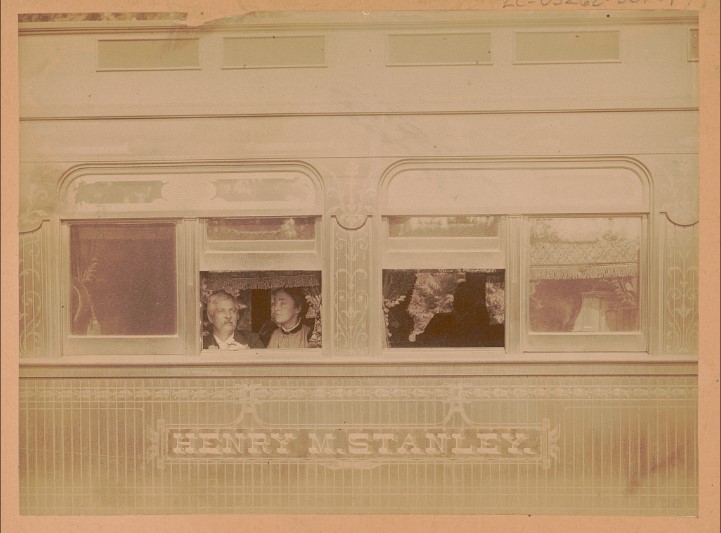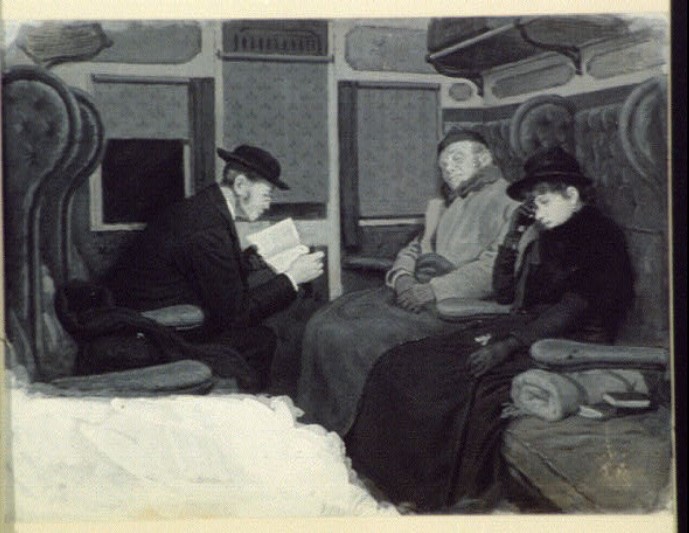The audio version of this Pinch of the Past was first shared in Episode 33: Guest KarenWitemeyer & The Sound of Diamonds by Rachelle Rea Cobb

General facts
Engine, tender with coal and water, mail cars, freight cars, baggage cars, passenger cars. Basic second-class cars might have slightly padded seats, windows at each seat that could open, fresh paint, monthly cleaning; passengers were usually local businessmen and middle-class families.
Laura Ingalls in her book, By the Shores of Silver Lake, wrote about her first time riding a train in 1879. She describes red velvet cushions on the seats, a water fountain, and a boy who walked the train selling candy and chewing gum to the passengers.
In cities, tracks intersected with streets used by horse-drawn vehicles and pedestrians. Signaling systems were unreliable, so travel through the maze of intersecting railroads in a city moved very slowly.
Outside the city, the train would stop at little “borderland” towns, which were communities that sprang up near the rail line, completely surrounded by farmland and forest. As people moved from the overcrowded cities, sometimes commuting back into the city daily by train to work, these communities expanded, becoming what we know as suburbs.

First class express trains
For the wealthy, travel was luxurious and fun aboard the Pullman Palace cars. For starters, first class trains had right of way; other trains had to pull onto side rails and wait for the first-class travelers to pass.
George Mortimer Pullman began designing his luxury cars in 1864. He added upper berths with hinges so they could be folded up during the day and reclining chairs which doubled as a bed. No sharing bunks required. He added the enclosed platforms at the end of the cars, so passengers could safely and comfortably move between cars without fear of falling or adverse weather.
By 1877, Pullman cars boasted large windows, plush cushioned seats, wide sofas that became roomy beds at night, and plenty of nice furnishings. Frank Leslie’s Illustrated Newspaper wrote, “The six months’ journey [over the plains] is reduced to less than a week. The prairie schooner has passed away, and is replaced by the railway coach with all its modern comforts.”

With no shortage of first-class passengers clamoring for tickets, Pullman invented all sorts of specialty cars. Smoking cars, reading cars, cars for listening to music, or cars designed like parlors for relaxing. They featured carpeted floors, mirrors in gilded frames, marble and walnut washstands, colorfully frescoed ceilings, and silver-plated metal trappings. Dining cars, although introduced in 1867, only became regular features in the 1880s. You could even rent a mobile hunting lodge for your friends to take a hunting trip!
If you’re wondering about the price for this luxury, in a time when highly skilled Americans earned under $1200 dollars a year, a first-class ticket from New York to Chicago cost $100.


One Reply to “Train Travel in the 1800s (Pt. 1)”
Comments are closed.